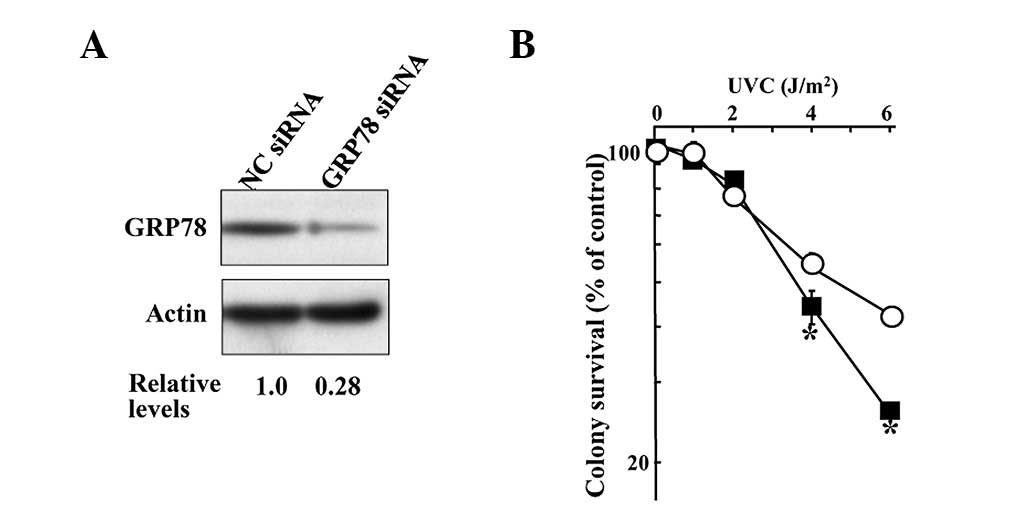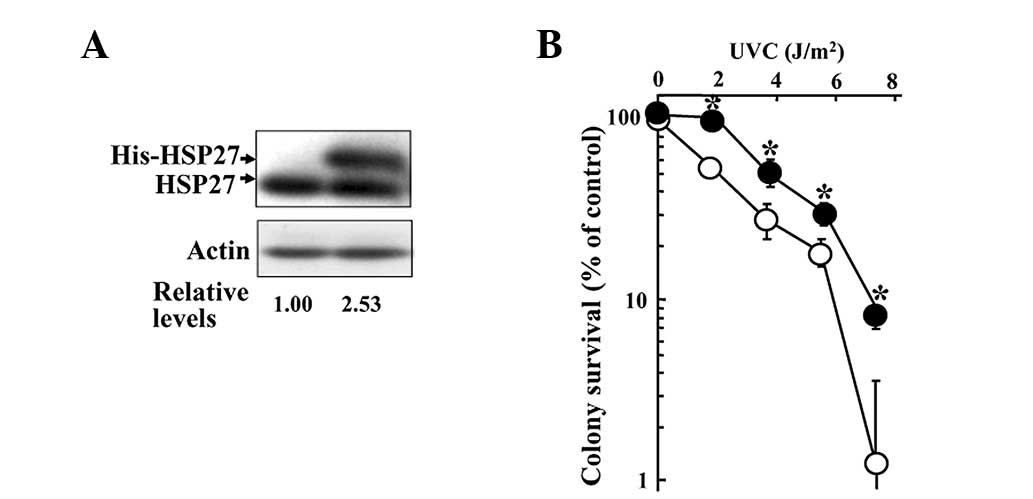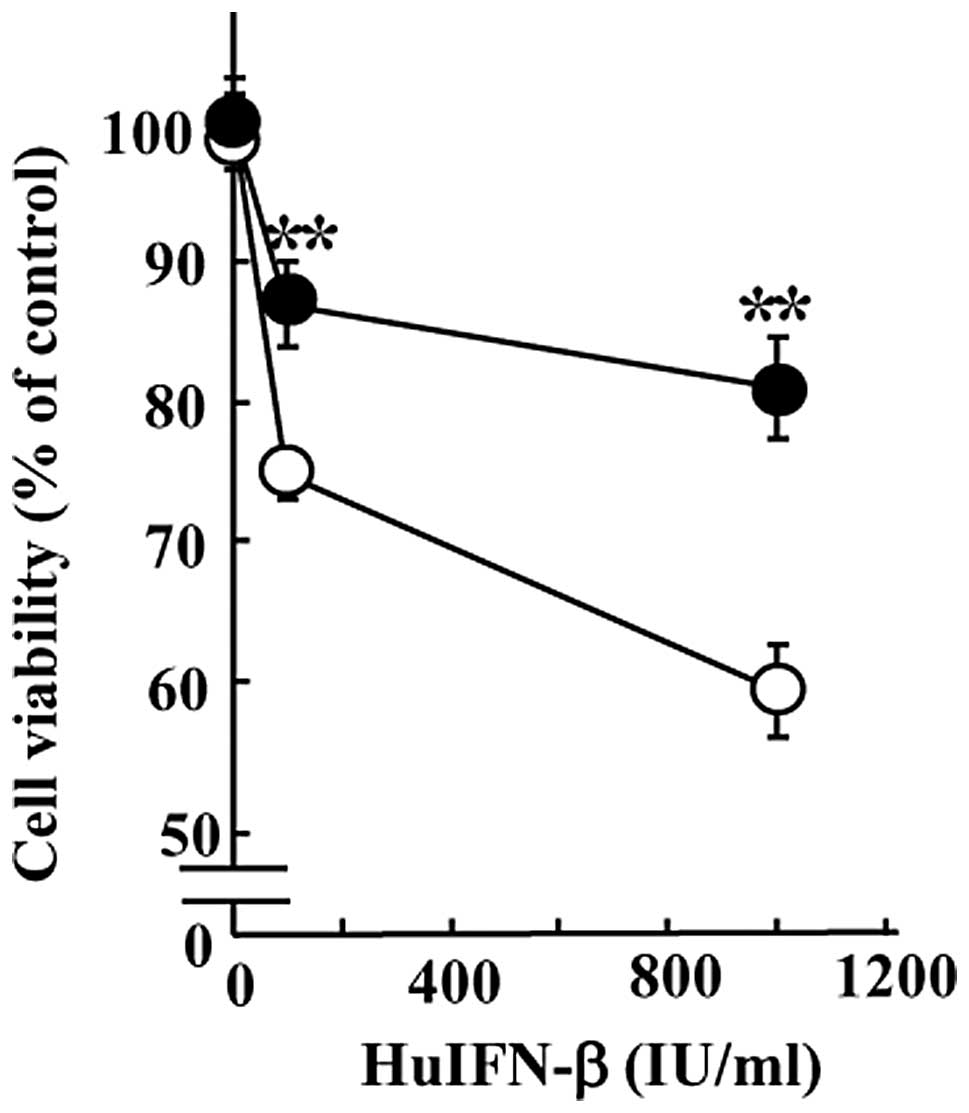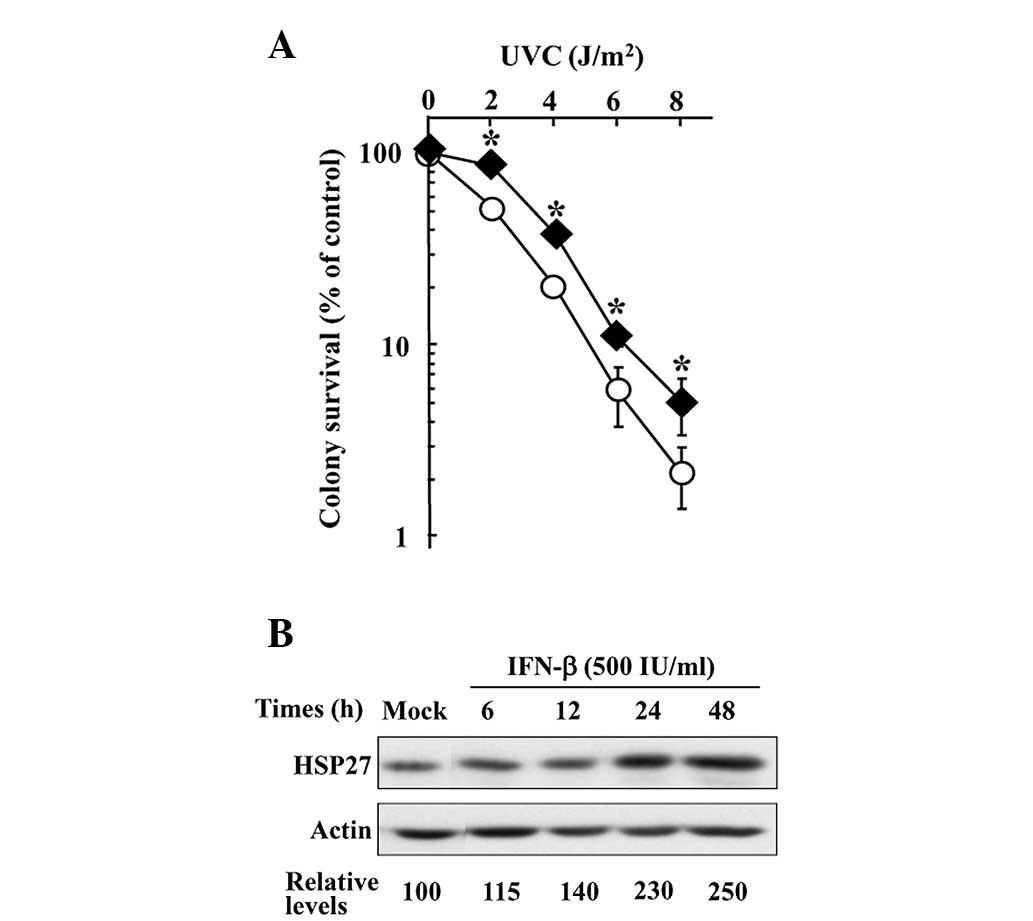Involvement of heat shock protein 27 in the susceptibility of KT human breast cancer cells to UVC and interferon lethality
- Authors:
- Published online on: September 4, 2012 https://doi.org/10.3892/etm.2012.696
- Pages: 913-917
Metrics:
Total
Views: 0 (Spandidos Publications: | PMC Statistics:
)
Total PDF Downloads: 0 (Spandidos Publications: | PMC Statistics:
)
Abstract
Revealing the key molecules regulating the stress‑response pathways in human cells is an intriguing problem. Chaperones, such as glucose-regulated protein 78 (GRP78) and heat shock protein 27 (HSP27), are important molecules for protecting the viability of human cells; however, it remains to be further clarified whether the molecules differentially modulate cellular responses to various types of stressors, such as DNA-damaging ultraviolet ray C (principally 254-nm wavelength, UVC) and cytocidal cytokine interferons. In the present study, the human breast cancer cell lines KT and MCF-7 were examined for GRP78 and HSP27 expression following exposure to UVC and human interferon-β (HuIFN‑β). The KT cells demonstrated a higher sensitivity to both UVC and HuIFN-β lethality than MCF-7 cells. The cellular expression levels of GRP78 in KT cells, assessed by western blot analysis, were approximately 2-fold higher than that in MCF-7 cells, while the expression of HSP27 in the KT cells was 20% of the expression in the MCF-7 cells. Decreased resistance to UVC lethality was observed in GRP78 siRNA‑transfected KT cells. In addition, HSP27 cDNA transfection of KT cells resulted in an increased resistance to UVC lethality. The cDNA-transfected KT cells showed an increased viability against HuIFN-β, compared with that of empty vector-transfected cells. By contrast, KT cells pretreated with HuIFN-β and irradiated with UVC demonstrated an increased resistance to UVC lethality, in association with increased levels of HSP27 expression. Thus, HSP27 may control the survival response pathways to both UVC and HuIFN-β in the human cells examined.
















